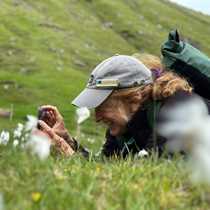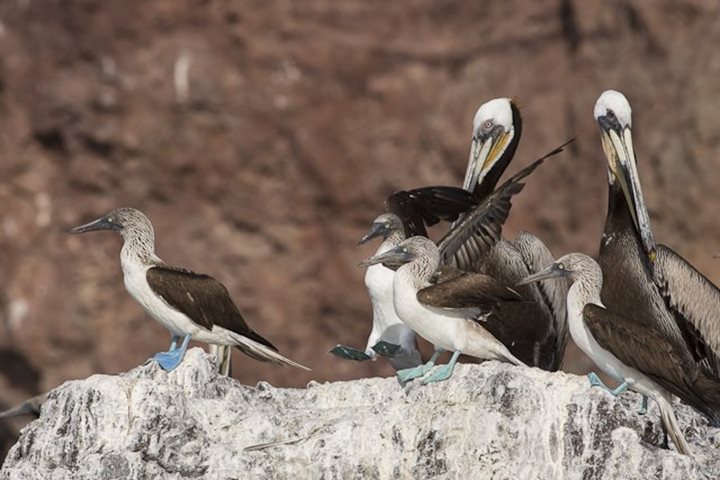What do you picture in your mind when someone says “Baja California?” Calm blue waters, days bookended by glowing orange sunrises, and pastel pink sunsets? That is just how our day developed. We traveled north all night from our boarding point of La Paz and after a lumpless night of navigation woke up south of Isla del Carmen. Before breakfast we found scattered pods of bottlenose dolphins, which rode the pressure wave created by the bow of the National Geographic Sea Bird plowing through the water. Afterwards we admired the common dolphins swimming amongst flocks of bobbing pelicans and paddling brown boobies. There were fluttering groups of Bonaparte’s gulls mixed amongst the yellow-footed gulls. A jaeger as well as a magnificent frigate were observed harassing seabirds that had been successful in their foraging activities.
The morning presented the opportunity for observation of life above the water, and with the afternoon, we had the opportunity to investigate the abundant life below water. With the ship anchored securely at Elephant Rock, intrepid snorkelers took to the waters and found a myriad of colorful fish, urchins, sea stars, and an extra special audio feature; it was described as “aquatic giggle-babbling.” A sure indicator of a good time with snorkel and fins.
With an overcast sky and an expansive arroyo in front of us, we took to terra firma for the latter part of the afternoon. Hurricanes in September and October dumped copious amounts of moisture along the peninsula and the Gulf Islands. The denizens of the desert reflected this rare abundance. Flowers adorned the branches of desert hibiscus and deadly nightshade. Fruits hung pendulant from the coyote gourd vines, the empty shells of Pitaya agria fruits told of a recent avian feast.
With the requisite glowing sunset, we headed back to the mother ship National Geographic Sea Bird and shared the highlights of our separate pathways with our fellow shipmates. A full and satisfying first day exploring the Sea of Cortez.







